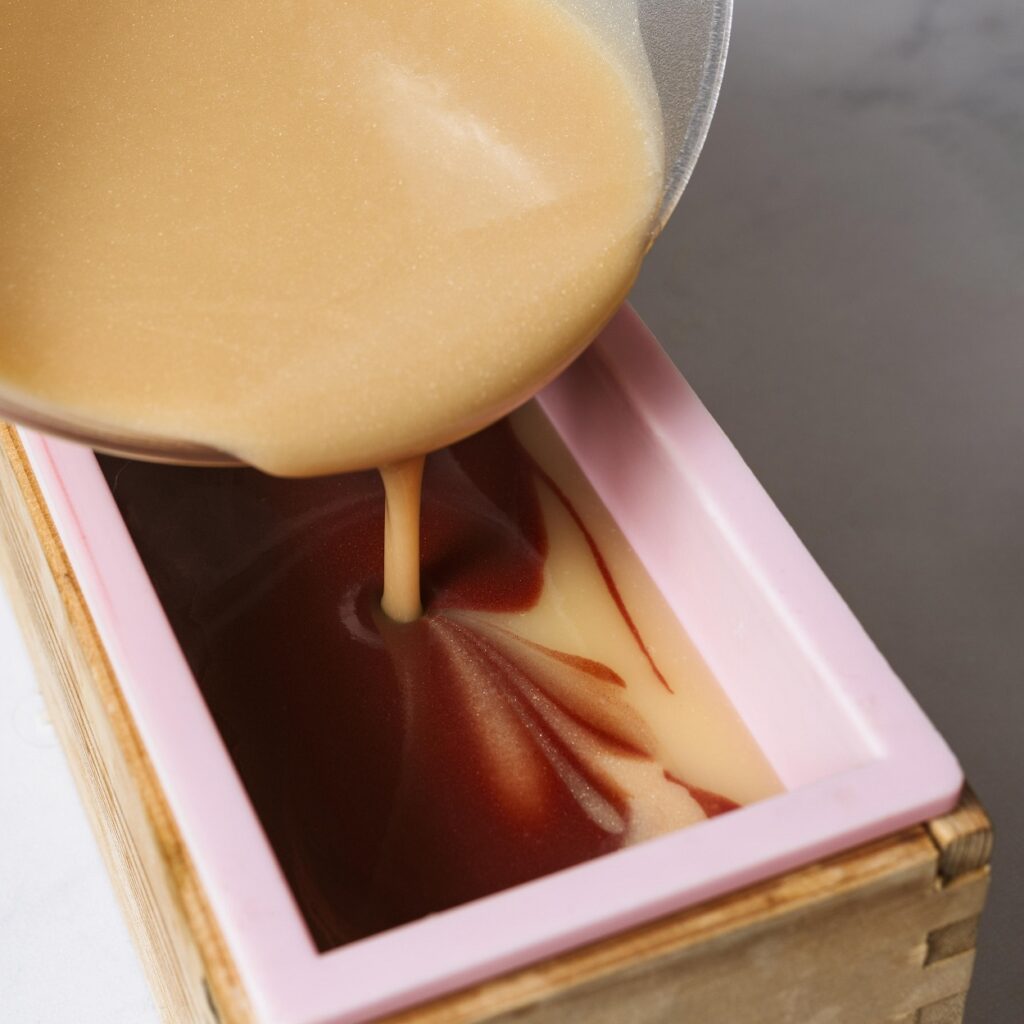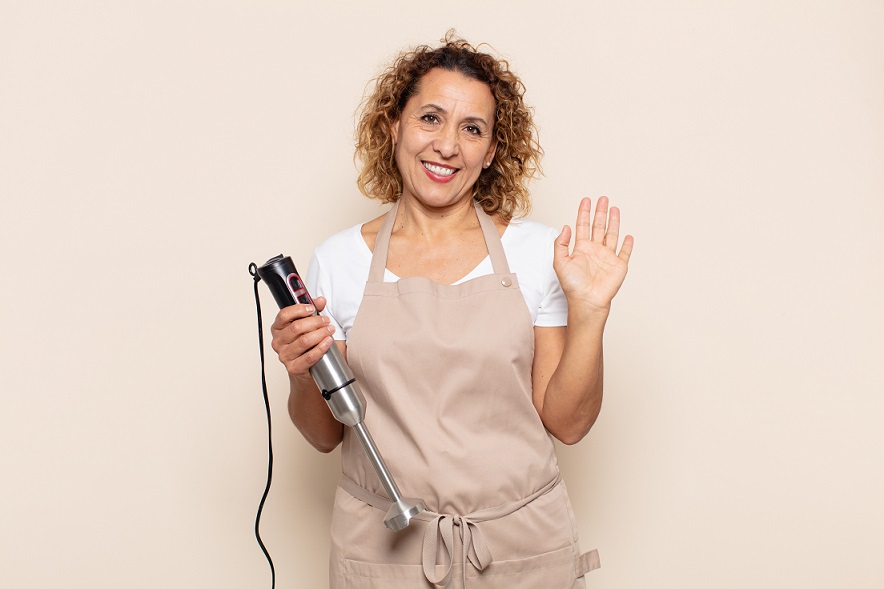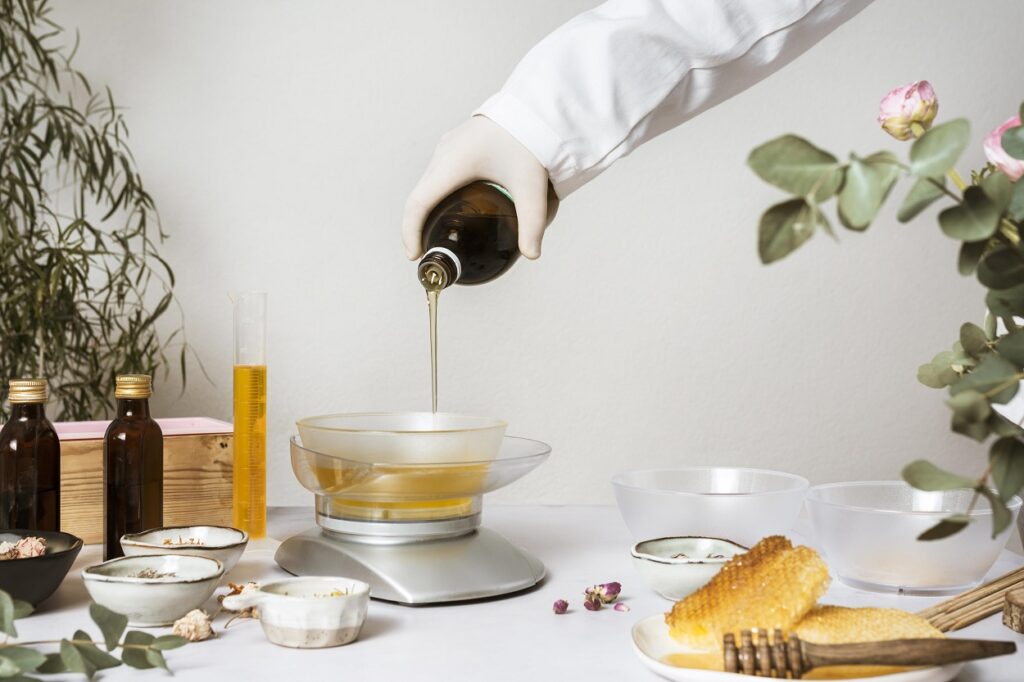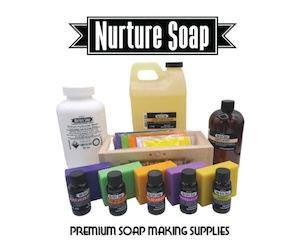Dominate Trace In Soap Making:
So you want to kick trace’s butt in cold process soap making, huh? One of the most satisfying things that we’ve found in cold process soap making is understanding techniques that help us control trace in our recipes.
Whether you’re a beginner or an experienced soap maker, dealing with trace can sometimes be challenging. It can swiftly turn intricate swirls or detailed designs into a distant dream. The reality is, perfection is elusive in soap making. Every soap maker, at some point, experiences batches that trace faster than expected. This could be due to calculation mistakes, human error, or even the nature of certain fragrances.
While it’s impossible to control trace perfectly in every batch, there are techniques you can employ to prevent your trace from accelerating uncontrollably.

Brief Overview of Trace:
This is not a post about what trace is in cold process soap making. This is a post on how we as soapers can help get control of it in our soaps, to come extent. With that said, let’s briefly explain trace, so we’re all on the same page.
Saponification begins when your lye and oils become mixed, blending continues, and the batter emulsifies in cold process soap making. As chemical reactions continue occurring between the lye solution and oils, your batter will begin to “trace”, which means it begins to thicken.
Emulsification happens prior to trace!
There are various phases of trace. Some simplify this process into 3 stages. Light (thin), medium, and heavy (thick) trace. Others add more stages, including; “very” thin trace, thin to medium trace, medium to thick trace, and so one.
As you get use to seeing and working with trace, you may refer to trace as the latter, but for simplicity, let’s stick with our thin, medium, thick trace, lingo.
Light (thin) Trace: No oil streaks left in the batter. “Thin” cake batter consistency! The batter will sit on top of the mixture and then gently sink back in when swirled over the top with a spoon or spatula.
Medium Trace: Slightly “thicker” cake batter. The easiest way to know you are now at medium trace, is if you swirl your mixture over-top (with a spoon or spatula) your batter it will NOT sink in!
Heavy (thick) trace: “Pudding-like” consistency! Difficult to pour. May have to use your spatula to “plop” your soap into the mold. Easy to manipulate. Holds shape. Great for soap top designs!
Tips for Controlling Trace:
There may not be a perfect order to these tips. However, this is the order of importance when we are trying to control trace in our recipes!
Why would we control trace?
One of the most important reasons we choose to control trace is when we want to push our soap design to include more detailed or intricate designs, such as swirling!
Temperature:
While there’s no definitive sequence to these guidelines, the following order is what we prioritize for controlling trace in our soap recipes.
Why Manage Trace?
A key reason to manage trace is to facilitate more complex soap designs, like intricate swirling patterns!
By temperature, we mean both the soap’s temperature and the environmental conditions.
Consider your surroundings:
- What is the climate like where you live?
- At what temperatures do you typically make soap?
When we say temperature, we are referring not only to the temperature of the soap, but also the environment.
- What climate do you live in?
- What temperatures are you soaping at?

A general rule is the higher the temperature, the faster your soap will trace.
To negate this, soaping at lower temperatures will help to a degree. We like to soap around 80-90 degrees, sometimes slightly higher. This means, both lye solution and oils are in that range. The way to keep track of this is with an infrared thermometer. It’s easy and very accurate.
Sometimes if you soap at to low of temperatures, you can run into “false trace”. Basically meaning that your soap can start to thicken prior to your oils and lye being emulsified or saponification occurring. This happens usually because of the temperature of your oils being lower then their melting point. Oftentimes, these oils will again melt, and can be stick blended out because the soap will heat back up during saponification.
However, we soap between 80-90 degrees F, in a room that’s roughly 72 degrees. We rarely have dealt with false trace, which resulted in ruining our design idea. Try to keep stirring or stick blend through false trace!
Related Article: Lye Safety: How to Safely Handle Lye or Sodium Hydroxide
The “Blender” Impact!
Let’s talk about the stick blender, a tool almost every soap maker possesses. It can either be your greatest ally or your most challenging adversary.
When we first started making soap, our batches were quite small. In fact, for the first few years, we always worked with smaller quantities. With these smaller batches, it’s remarkably easy to overmix and end up with a solidified mass of soap. If you’re not yet familiar with the properties of your base oils and haven’t thoroughly tested your fragrances, this overmixing could lead to disastrous results.

Tip #1: Avoid Using the Blender with Unfamiliar Ingredients!
If you’re new to soapmaking, consider starting with just a spatula. It might take anywhere from 2 to 20 minutes or more of manual stirring to reach trace, but it’s a valuable learning experience. This technique also helps you develop a sense of different trace levels by feel and sight.
Tip #2: Monitor the Trace Progress
Periodically, use your spatula to drizzle some soap batter over the rest of the mix. Look for signs: do you see oil streaks (indicating it’s not fully emulsified)? Does it blend back in (suggesting a thin trace)? Or does it sit on the surface (indicating a medium to thick trace)? Don’t overthink it, and don’t fear the trace. The more you observe and work with it, the more comfortable you’ll become.
For your next batch with the same recipe, experiment with your stick blender in short pulses. Notice how much quicker emulsification and tracing happen. It’s significantly faster but also riskier. Remember, cold process soap making is a true test of patience!
Understanding the Oils in Your Recipe:
From our own journey, we’ve learned that this is one of the simpler concepts in soapmaking, yet it took us quite some time to grasp it fully.
We’ve previously discussed how soapmaking is not just an art but also a science.
Just as in chemistry, where understanding the basics and properties of compounds is crucial, the same applies to soapmaking.
When we began, we used to input our recipes into a soap calculator. We noticed that certain terms on the left side of the page would change as we selected different oils. This observation is key to mastering the art and science of soapmaking.

Obviously late, we realized just how important it was to understand fatty acid profiles of the oils/butter we were using in our recipes. These fatty acids not only dictate hardness, moisturizing, cleansing properties in soap, but increasing certain oils, can speed up trace!
When working with oils that solidify at room temperature, these typically contain higher amounts of saturated fatty acids.
If you visit soapcalc.net and hover your cursor over each fatty acid, they are listed in order from saturated to unsaturated fatty acids.
As you select different oils, you’ll notice that the fatty acids composing these butters and oils vary. Some have more solid components like lauric, myristic, palmitic, and stearic acids, contributing to a harder oil. In contrast, others contain components like oleic, linoleic, and linolenic fatty acids, which tend to create a “softer” oil or remain liquid at room temperature.
Once you’ve input your recipe into SoapCalc and hit “calculate recipe” followed by “view or print recipe,” the tool conveniently displays the total saturated versus unsaturated fats in your recipe. This information is valuable as it gives an insight into how your recipe might behave during the saponification process.
Water in Your Recipe:
The other part of the equation has to do with water amounts! Typically the more of a water discount you do (less water to the lye mixture then the recipe calls for), you’ll end up with a faster tracing batter. Remember, water directly effects and causes temperature fluctuations in CP soap making.
What Does This Mean?
With a water discount, your soap will spend less time at maximum temperature. Meaning that it may partially gel or may not go through gel at all. In these cases you may find it necessary to force gel phase. This could be through oven processing or using a heating pad under your mold.
You can read more about “insulting CP soap” and “gel phase” on our blog.
What this means in regards to trace is that, it will start to saponify faster due to a more concentered lye solution. If you’re looking to do swirls or detailed patterns, and need time for your trace to occur, try sticking to a 30-33% lye solution. This means more water, which = slower trace, which = more apt to experience gel phase.
Finals Thoughts
Okay so lot’s of information here, right! Take some time to digest it and then, practice. Try sticking to a common soap recipe, like olive, coconut oil and palm.
Go through some experimentation with water discount vs. no water discounts, stick blending vs. not stick blending. Furthermore, take detailed notes on the recipe pages as to what you did and how it effected trace.
Be sure to share your experiences and how you have “kicked” trace’s butt, and learned to control your formulations better! Thanks for coming by, hope to have you again soon!



